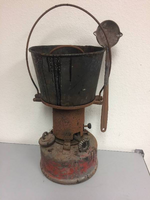Hi,
Is it a common observation that when the electrical parts are soldered but their quality is bad, it could still work at the beginning but eventually it will intermittently be failed?
If the parts were soldered very well, does it still get failed due to transportation vibration or temperature (environment) ?
Or they just failed because their soldering was poor?
Is it a common observation that when the electrical parts are soldered but their quality is bad, it could still work at the beginning but eventually it will intermittently be failed?
If the parts were soldered very well, does it still get failed due to transportation vibration or temperature (environment) ?
Or they just failed because their soldering was poor?

